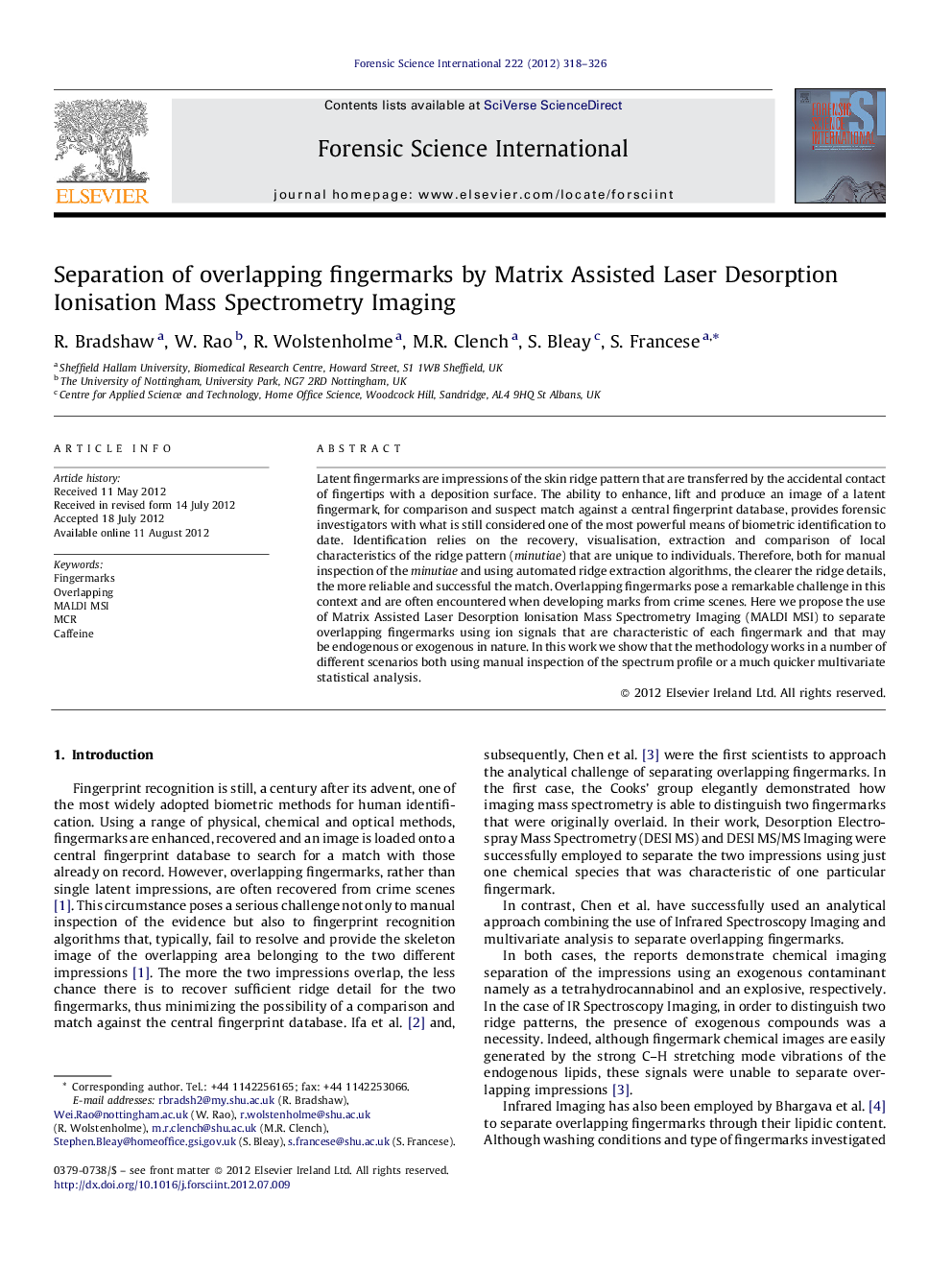| Article ID | Journal | Published Year | Pages | File Type |
|---|---|---|---|---|
| 96508 | Forensic Science International | 2012 | 9 Pages |
Latent fingermarks are impressions of the skin ridge pattern that are transferred by the accidental contact of fingertips with a deposition surface. The ability to enhance, lift and produce an image of a latent fingermark, for comparison and suspect match against a central fingerprint database, provides forensic investigators with what is still considered one of the most powerful means of biometric identification to date. Identification relies on the recovery, visualisation, extraction and comparison of local characteristics of the ridge pattern (minutiae) that are unique to individuals. Therefore, both for manual inspection of the minutiae and using automated ridge extraction algorithms, the clearer the ridge details, the more reliable and successful the match. Overlapping fingermarks pose a remarkable challenge in this context and are often encountered when developing marks from crime scenes. Here we propose the use of Matrix Assisted Laser Desorption Ionisation Mass Spectrometry Imaging (MALDI MSI) to separate overlapping fingermarks using ion signals that are characteristic of each fingermark and that may be endogenous or exogenous in nature. In this work we show that the methodology works in a number of different scenarios both using manual inspection of the spectrum profile or a much quicker multivariate statistical analysis.
